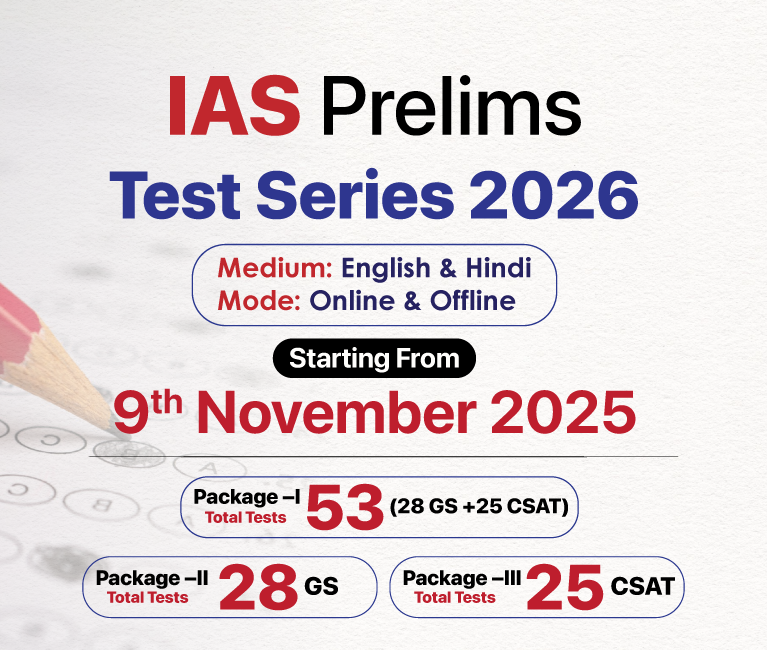West Bengal Switch to Hindi
Syama Prasad Mookerjee Port wins Maritime Excellence Award
Why in News?
Syama Prasad Mookerjee Port, Kolkata (SMPK) India’s oldest operational major port — has been honoured with the Maritime Excellence Award (Heritage Category) during India Maritime Week 2025.
Key Points
- Maritime Excellence Awards 2025:
- These awards are given by Ministry of Ports, Shipping and Waterways (MoPSW).
- The awards covered multiple categories such as Excellence in Shipbuilding & Ship Repair, Terminal Operational Excellence, Digital Transformation, Port Sustainability Pioneer, Shipping Sustainability Pioneer, Maritime Education & Skill Development, Indian Port of the Year, and Emerging Indian Entrepreneur of the Year.
- The Heritage Category specifically honours ports or institutions with a rich maritime legacy that have significantly contributed to India’s maritime history and development.
- India Maritime Week (IMW):
- The India Maritime Week 2025 (IMW 2025) was held in Mumbai, organized by the Ministry of Ports, Shipping and Waterways (MoPSW) in collaboration with the Indian Ports Association.
- It is a premier five-day event uniting maritime experts, innovators, and leaders from 85 countries.
- Theme 2025:“Uniting Oceans, One Maritime Vision,”
- The Syama Prasad Mookerjee Port (SMPK):
- It was established in 1870 as the Kolkata Port Trust. The port was renamed in 2020 to honour Dr. Syama Prasad Mookerjee.
- It is India’s oldest operational port, located on the Hooghly River in West Bengal.
- It operates under the Ministry of Ports, Shipping and Waterways. It registered the highest cargo traffic among all 12 Major Ports in India.
National Current Affairs Switch to Hindi
Emissions Gap Report 2025
Why in News?
The United Nations Environment Programme (UNEP) released its Emissions Gap Report 2025, titled “Off Target”, warning that current climate pledges under the Paris Agreement are insufficient to meet the 1.5°C target.
Key Points
- Projected Warming Levels:
- Under the current policies, the world is projected to warm by approximately 2.8°C by 2100.
- If all Nationally Determined Contributions (NDCs) are fully implemented, the projected warming could be reduced to around 2.3–2.5°C by the end of the century.
- Only a marginal improvement from last year’s (2024) estimate of 2.6–2.8°C, showing limited new ambition.
- Influencing Factors:
- Methodological adjustments improved projections by 0.1°C.
- US withdrawal from the Paris Agreement expected to offset the same 0.1°C gain.
- Reduction Targets by 2035:
- To limit global warming to 2°C, global greenhouse gas emissions must decline by 35% below 2019 levels by 2035.
- To achieve the more ambitious 1.5°C target, emissions need to fall by 55% below 2019 levels within the same period.
- However, UNEP warns that a temporary overshoot of the 1.5°C threshold is very likely within the next decade, underscoring the urgency for deeper and faster emission cuts.
- Positive Indicators:
- Projected temperature rise has dropped from 3–3.5°C (2015) to around 2.5°C (2025), reflecting progress since the Paris Agreement.
- Solar and wind technologies are rapidly scaling, cutting deployment costs globally.
United Nations Environment Programme (UNEP)
- Established in 1972, following the UN Conference on the Human Environment (Stockholm).
- Headquarters: Nairobi, Kenya
- Acts as the leading global environmental authority, coordinating international environmental efforts and assisting nations in implementing sustainable policies.
- Flagship Reports:
- Emissions Gap Report
- Adaptation Gap Report
- Global Environment Outlook (GEO)
National Current Affairs Switch to Hindi
State of Food and Agriculture (SOFA) 2025 Report
Why in News?
The Food and Agriculture Organization (FAO) has released the State of Food and Agriculture (SOFA) 2025 report titled “Addressing Land Degradation Across Landholding Scales”.
Key Points
- Key Findings:
- Global Cropland Decline: Around 20% of global croplands show declining productivity due to soil erosion, nutrient depletion, and loss of organic carbon.
- Regional Impact: Asia and Africa are the most affected, with severe yield gaps (up to 70% below potential levels) in South Asia and sub-Saharan Africa.
- India’s Status: India recorded one of the highest yield gaps globally, attributed to land misuse and declining soil fertility.
- Key Drivers: Deforestation (90% of forest loss), monocropping, excessive fertilizer use, unsustainable irrigation, and poor soil management.
- Land Degradation:
- Land degradation is defined as the long-term decline in land’s ability to provide essential ecosystem services, caused by natural processes and human actions like deforestation, overgrazing, and unsustainable irrigation.
- Land Degradation Neutrality (LDN):
- It refers to a global goal aimed at ensuring that the amount and quality of land resources remain stable or improve over time.
- The concept was adopted under the United Nations Convention to Combat Desertification (UNCCD) in 2015 as part of the Sustainable Development Goal (SDG) 15.3.
- Land Degradation Neutrality (LDN) Hierarchy: Avoid > Reduce > Reverse land degradation- a core FAO principle to restore ecological balance.
Food and Agriculture Organization (FAO)
- The Food and Agriculture Organization (FAO) was established in 1945.
- It is headquartered in Rome, Italy.
- It functions as a specialized agency of the United Nations.
- It has 194 member countries, including the European Union.
- It aims to end hunger, improve nutrition, ensure food security, and promote sustainable agriculture.
- Flagship Reports:
- State of Food and Agriculture (SOFA)
- State of Food Security and Nutrition in the World (SOFI)
- State of World Fisheries and Aquaculture (SOFIA)
- State of the World’s Forests (SOFO)
- India and FAO: India is a founding member; FAO supports India’s National Food Security Mission, Soil Health Card Scheme, and Sustainable Land Management initiatives.


.png)








.png)


.jpg)



 PCS Parikshan
PCS Parikshan

